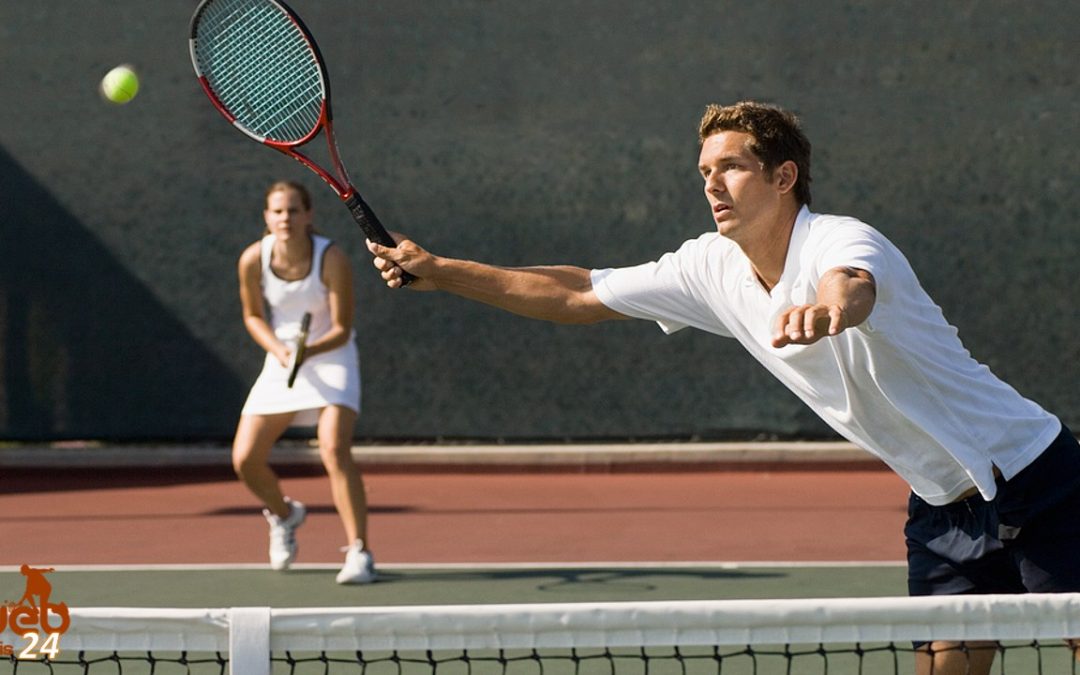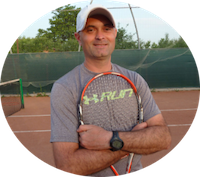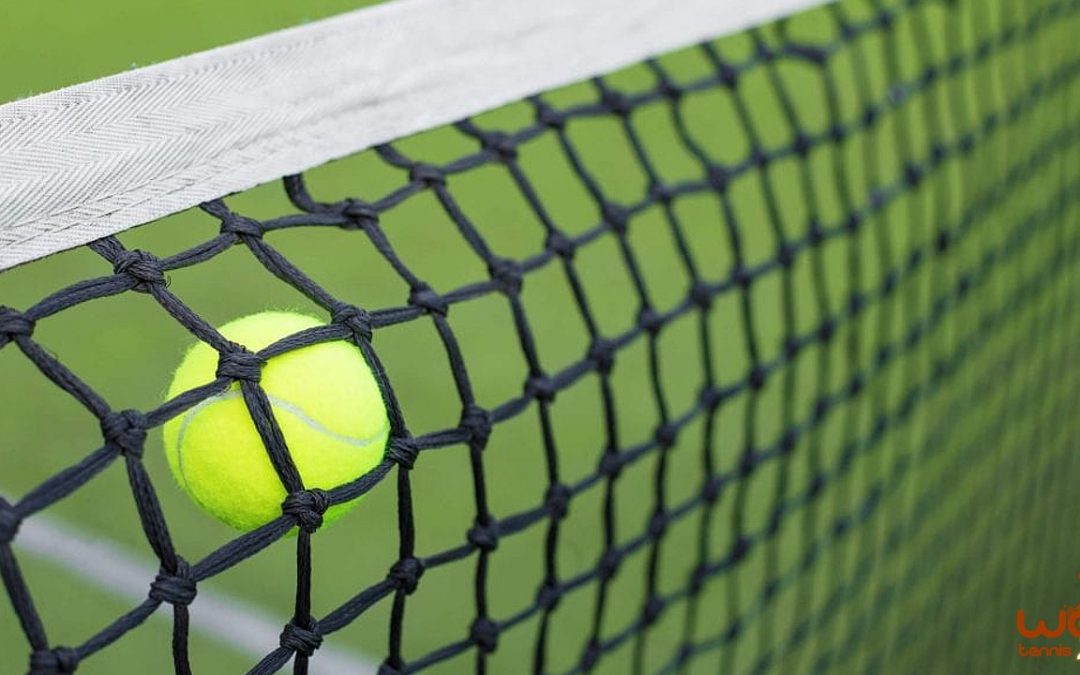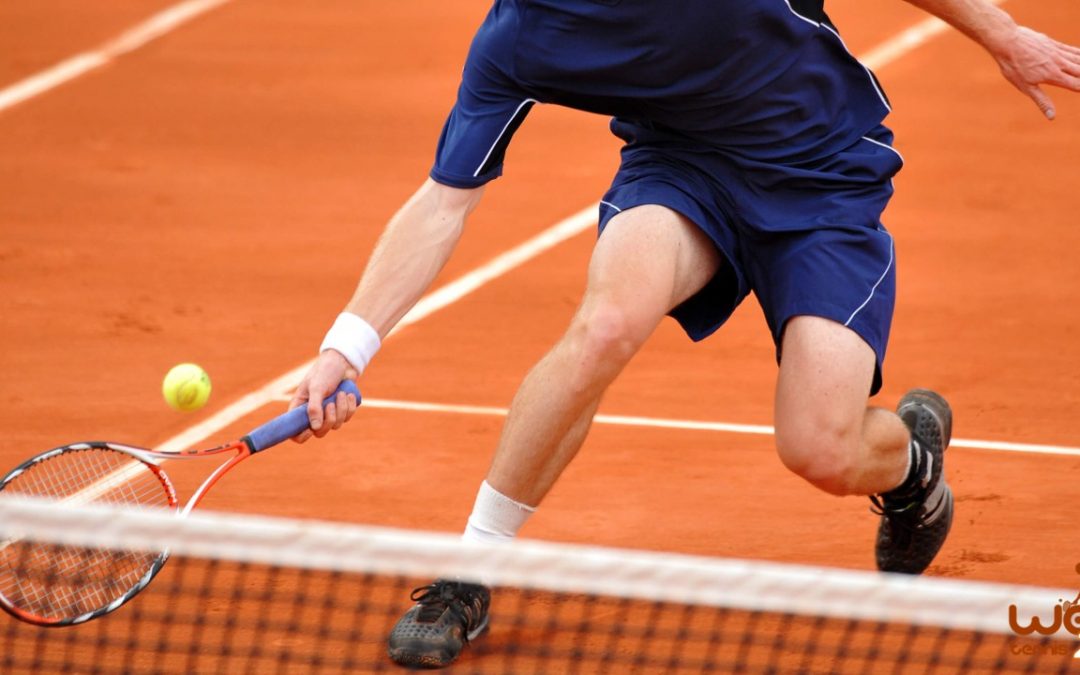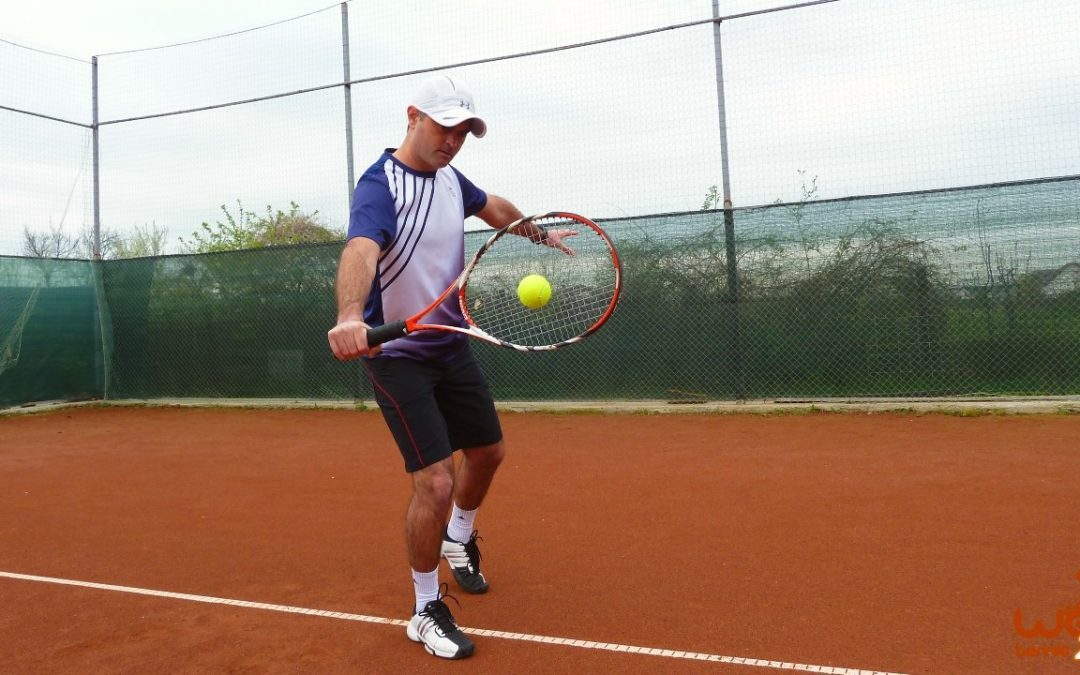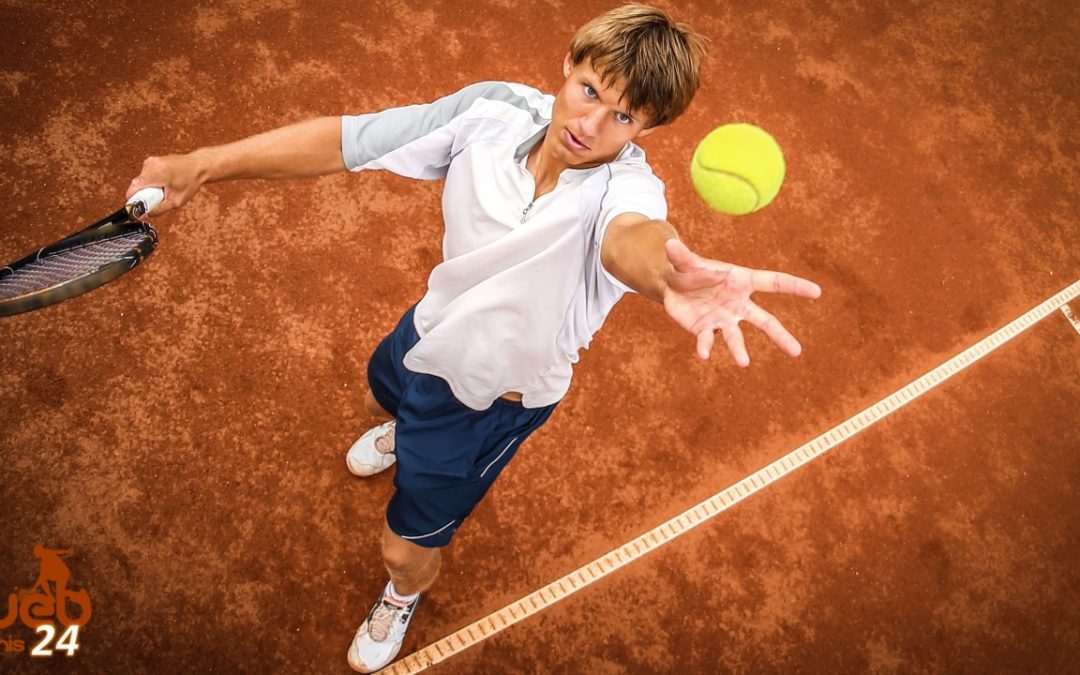I sent a simple question to over 10,000 tennis players, coaches, and tennis parents:
“If I could write about 1 thing to make your tennis better, what would it be?”
There are many players and coaches who strive for good and straight-to-the-point information.
Now that I’ve been playing tennis for over 28 years and taught this wonderful sport full-time for almost 13 years, it would be a great pleasure of mine to share my knowledge.
Below, I’ve written my answers to the requests you sent in response to my email.
I’ve tried my best to give my honest answers, hoping to clarify the issues and give solutions to improving your tennis.
I’d have to mention that some of the answers I provided below are already presented in great detail on my website. Some issues are going to be the material for future articles/videos, and the ones I could give my straight opinion on are there to be read and debated (which I strongly advise you to do, whether you agree with me or not).
So here are the first 50 requests that tennis players and coaches would like to find out more about:
1. “to share your experience and what you learned out of it”
– Most of the tennis experiences that I’ve been sharing are on My Blog, where you can find lots of articles describing my honest opinion about how to learn and teach tennis, as well as my “adventure” in teaching my own two daughters.
2. “how to handle topspin volley without hitting them in the net or out?”
– You just asked a question about my favorite stroke in tennis, the drive volley.
As I described in a recent video lesson I posted at WebTennis24, when you hit a drive volley you must understand the following:
1) the ball comes down onto your racquet faster than during a groundstroke, therefore you should aim higher (at least 2 feet over the net) – otherwise, you’ll send many drive volleys into the net;
2) if you swing up and across the back of the ball (some call it “windshield wiper” motion) you’ll impart enough spin to keep the ball inside the baseline.
3. “return of serve (both bh and fh)”
– The key elements to a good return of serve are: reading your opponent’s body language (predicting the type of spin and placement), footwork, and preparation.
For details on how to hit a successful return of serve, check out the following articles/videos:
1) Do THIS for a Better Return of Serve
2) Return of Serve Tactics – an excellent resource presenting how, where, and why you should hit your return of serve according to certain tactical situations.
4. “injury prevention”
– This is an area that I, unfortunately, don’t have too much material to write about. Therefore, I’d warmly recommend you check out Suzanna McGee’s website: http://www.tennisfitnesslove.com/. She is a true professional in regard to tennis nutrition and injury prevention.
5. “how to hit a good forehand and backhand accompanied by some good videos to download”
– In my Tennis Technique Lessons video section, I have tried my best to break down both strokes (forehand and backhand: two-handed and one-handed) into small elements so that the player can understand the basic mechanics for a correct, consistent, and comfortable technique. You can also check out drills to improve your strokes once you feel comfortable with the proper technique.
6. “being (not) so hard on myself”
– I feel your pain and I can share many times when I’ve gone through frustrations.
Here are some of my tips:
1) make sure that your equipment feels “right”; that means getting a good string (it matters a lot), a racquet appropriate to the level and kind of game you play;
2) get in shape – most of our frustration comes from not moving well on the court and not being fit enough to execute certain strokes that we want;
3) mentally – understand that tennis is a game and you should play to have fun and get a good workout.
Ultimately, don’t do what I recently did: break a new racquet out of frustration. I still regret that I did not control my temper. It was so not worth it… I miss my racquet!!! :'(
7. “my second serve”
– I did write quite a few articles about the Second Serve (where have you been??? :)). Check them out here:
1) Why Should You Slice Your Second Serve
2) Second Serve Priorities in Tennis
3) How to Attack the Second Serve
4) Second Serve – Spin, Tactics, and Mental Tips
8. “I’m 75 years old; how can I play tennis and have good fitness considering I have knee pains and am not strong?”
– I once had a student who was 81. I loved the way he committed to improving his tennis.
I would say to get better with the choice of shots and understand and use the court geometry to your advantage. Depending on whether you enjoy singles or doubles, there are certain tactics and shot selections you could use in order to run less and cover the court more efficiently.
I’ve spent a great amount of time presenting all the advantages that involve good knowledge of court coverage and how to use them to save energy by positioning in the right spot when playing certain shots.
Get an in-depth analysis of court coverage by clicking here.
9. “kick serve that goes in all the time with speed and depth”
– This is something I have on the list of things to do. It will come up sometime in May 2016: progression drills for hitting a solid kick serve.
10. “consistency with a penetrating topspin forehand”
– I’ll put this on my to-do list as well. Thank you for suggesting it! (:
11. “mental aspects of tennis”
– This is another area that you can find at WebTennis24.com under the section Mental Tennis. Here you’ll find some unique content in the sense that each stroke is presented from a mental aspect: what you should visualize yourself achieving, how you should control your body and other mental elements that I personally studied for many years because I was one of those less talented individuals who had to figure out how tennis works on my own. Enjoy! (:
12. “how to make the necessary mental adjustments when your match may be slipping away”
– From my point of view, when you see the match slipping away, you should realize that you’ve got nothing to lose. Therefore, as I tell my students… if my opponent is going to take this match, at least I’ll make them work hard for it.
13. “how to stay focused/poised when you’re in control of the match, staying confident but not cocky”
– It is so easy to lose your concentration during the match, especially when you are ahead.
One trick that has worked for me to remain focused throughout the match was to always keep track of the score and visualize that I am winning the next point.
That keeps your mind from wandering away and getting distracted. This helps you stay positive and connected with what happens on the court.
I often tell my students that if they lose track of the score during a match, that means they are not focused on what is happening on the court. And that is one of the causes of many players losing matches.
14. “how to make training more match realistic, with stress factor, etc.”
– There are many drills and games that you can apply in your training. We have posted lots of them in the “Mental Strength Tennis Drills” section at WebTennis24. Enjoy becoming mentally tough!
15. “how to teach kids to improve their tracking skills”
– There are quite a few drills and even games that kids would love (always make it fun for them). A lot has been posted in the Tennis Games and Drills for Kids section at WebTennis24.com. Kids love them!
16. “lesson plans for senior players”
– We have posted many lesson plans at WebTennis24.com that can be applied to seniors also. Most of the drills and games presented here can be adapted to senior players with respect to applying the proper recovery time and adjusting the intensity of the effort.
17. “I have some problems right now with the correct contact to hit the ball, the toss and the correct way to hit with topspin.”
– There is a section called Quick Tennis Fixes at WebTennis24.com. You’ll find many videos presenting common issues that tennis players encounter, the reasons they happen, and how to fix them. You’ll love these videos – they are short and demonstrate the fix in the simplest ways.
18. “anticipation”
– Anticipation in tennis comes with experience and a conscientious effort to pay attention to your opponent’s body language before they strike the ball, as well as with good court coverage knowledge. Study those and you’ll find yourself being in the right spot (most of the time), saving energy and winning points easier.
19. “look at the ball!!!!!!!!!!!!!!!!”
– I know what you mean! (: Let me just share one of my tricks that has allowed me for many years to focus on the ball:
Before I have a tough tennis match, I do this exercise (you can call it meditation, if you want)… I sit in a chair, comfortably, and look for a spot (no bigger than a button) that is at least 3 feet away. It can be any spot on the wall or… anything. Then I keep my eyes on it without staring or straining my eyes. I stay still and focus on that spot for at least 1 minute.
That has helped me clear my mind and learn to avoid shifting my eyes away from the object (in this case, the ball) which interests me. Try it! You might find it useful in keeping your eyes on the ball.
20. “serve”
– Oh, the mighty Serve. What is there to say about it? It is a stroke that anybody can improve as far as technique, power, placement, spin, etc.
I’ve written quite a few articles in regard to the Serve. Please check some of them here:
1) My Best Tip for a Good Serve Toss
2) It’s the Only Serve I Trust
3) I’ve Found This to Be the Best Serve Toss Tip
4) How to Get a Better Serve Toss in Tennis
5) Facts You Should Know About Slice and Kick Serves
6) Second Serve Priorities in Tennis
7) Why You Should Slice Your Second Serve
8) How to Avoid Choking When Serving in Tennis
9) Why Should You Practice the Wide Serve More Often
10) Practice Ad Court Serves More Often – Here’s Why…
11) The Body Serve is The Best – Here’s Why
21. “first volley!”
– Your first volleys depend a lot on the previous stroke: the approach shot.
The quality of your approach shot can place you in a situation of an easier first volley or a more difficult one. I said “easier” because, in general, the first volley is not an easy shot.
If you are approaching the net, most of the time you’ll be hitting the first volley from around the service line area and it will be a low one (contact below net level).
Think about the first volley being more of a placement shot. The emphasis will be to give yourself time to get in balance and a better position closer to the net for the next volley while making it possible for your opponent to hit it on the run or as a weak reply.
So think of your first volley more in terms of placement and set yourself up for the second volley where you’ll afford a more comfortable and aggressive shot.
22. “how to avoid unforced errors”
– If one finds the solution to avoid unforced errors, they are my idol. 🙂
Aside from that, you can obviously cut down on unforced errors by doing the following:
1) keep your mind distracted from the pressure of the match and your opponent;
2) stick with what makes you comfortable and use the strokes you don’t trust only when you have a clear advantage;
3) keep your knees bent – by doing that you increase your balance by having a low center of gravity;
4) aim higher over the net and at least 3 feet inside the lines; don’t fall for the hype to hit all the balls close to the baseline – making them land just beyond the service line would be sufficient enough to enjoy long rallies and keep your opponent from attacking you;
5) use spin – it is one of the best ways to allow yourself to put more pace on your shots while maintaining the balls in the court;
6) visualize your shots going in; keep a positive attitude and find a way to snap out of negative thoughts (see tip above: number 13)
7) practice the strokes you don’t feel consistent with; use drills that put you under pressure situations like the ones highlighted in the Mental Strength Tennis Drills section.
23. “speed”
– One of my favorite tennis drills for footwork and speed is the so-called Spider Web. This incorporates most of the movements you’ll need in tennis and it is great for conditioning too.
Do it at least 3 times per week and you’ll see an improvement in your on-court speed.
24. “doubles strategy”
– Everything (well, at least that’s what I consider) about how to play and win in doubles (positioning, formations, communication, court geometry, etc.) is here in the Doubles Tennis Tactics section at WebTennis24.com. Have fun learning the doubles tactics and strategies!
25. “pronation on the serve”
– That’s a tough one to teach because it can lead to injuries if not done correctly.
In my opinion, the pronation should be the result of you keeping the grip and wrist loose, allowing your forearm to rotate inward during the contact.
Also, try to visualize how you’d like the strings to brush on the back of the ball; then let it happen.
26. “consistent focus during the matches”
– See answer to no. 13 (above).
27. “more lesson plans and remedial drills to correct mistakes in techniques”
– I’ll continue to provide that. Until then, make sure you check out the Tennis Lesson Plans section at WebTennisDrills.com and Tennis Technique Lessons at WebTennis24.com.
28. “fitness”
– Lots of video fitness and conditioning drills can be found in the Conditioning/Speed section at WebTennis24.com.
29. “what is the best strategy to use to return hard, fast-paced balls when a very large hard-hitting man is hitting at me in mixed doubles (especially when I’m at the net)?”
– When you are a player at the net defending against a hard hitter I would suggest the following:
1) don’t play at the net (you didn’t see this one coming, huh? :)). Instead, play more from the baseline and come up when you find a better opportunity; but if you dare to come up to the net, then…
2) technically: stay low, keep the racquet up and get ready to use your backhand side of your racquet (it is easier to move the dominant elbow away and block the ball with the backhand);
3) if you really want to stay at the net against a fast returner, make a couple of steps further back (closer to the service line) and try blocking the balls from there until you find a better chance to come closer to the net;
4) if nothing else works, then I guess the best way is to warn the big macho man that hitting hard toward a lady is not polite (you can tell him I said that :))!
30. “how to hit a topspin second serve using a pinpoint serve stance”
– The same way you’d hit a topspin second serve using a platform stance: toss the ball a bit over towards the non-dominant shoulder and brush the ball up as it comes down.
Oh, and one more thing: visualize it going in.
31. “how long should kids practice on one drill and how many hours a day?”
– How long should a kid practice a drill depends on the kid’s age, desire and focus.
In general, try to not dwell on a single drill for too long. I remember one of my mentors telling me (when I was at the beginning of my career) – “Cosmin, within 20 minutes you should do at least 3 drills; more than that as the kids are younger”.
How many hours a DAY? It depends on the kids’ age, level of performance, and obviously, desire to play.
With older kids (over 10 years old) you can do it up to 2 hours, but the younger they are, the harder it is to keep them focused and enjoying it.
For example, with my two daughters (8.5 and 10 years old) I do 1.5-hour long lessons 3 times per week. Besides tennis, they do swimming (once a week) and soon they’ll start guitar (the younger one) and piano (the older one) lessons.
If the kid wants more, then do more than three times a week; as long as they enjoy and ask for it.
32. “how to play slice backhand well; where does the ball hit the racket?”
– I recently added a new Slice Backhand Lesson and Adding more Power to Your Slice Backhand videos where the following elements are highlighted:
1) grip should be continental;
2) prepare with the racquet higher than the eventual point of contact;
3) keep the body sideways and in balance by “spreading the wings” and sliding the back foot behind you during contact;
4) learn to pull the racquet through the ball instead of pushing it – you’ll get more power!
5) at contact, visualize that the lower part of your strings will make contact first with the ball which will then slide over the center of the racquet as the strings brush the ball in a high-to-low trajectory;
6) keep the head down and still.
33. “any tips for tennis elbow”
– I had “golfer’s elbow” at some point when I was playing and tried to add more power to my one-handed backhand by over-supinating the forearm; but, fortunately, I’ve never had tennis elbow.
And I owe this to one single exercise I do every day: I grab the racquet’s handle with both hands so that the racquet is parallel to the ground, shoulders level, palms down; I twist the racquet handle in my hands forward until I count to 30, then backward.
When you do this exercise for the first time you’ll feel a little burning in your forearms. That’s a good sign. (:
Do it every day. It only takes a minute but you’ll feel more control on your forehand groundstrokes, one-handed backhand, volleys, serves, etc.
How to cure tennis elbow? Rest and do specific forearm exercises that you can find on the internet.
34. “the volley: to gain more confidence when I raise the net”
– Practice, practice, and practice. Use volley drills as you can find in the Volley Tennis Drills section at WebTennis24.com.
35. “to be more orthodox hitting the forehand”
– I assume that the video lessons we’ve posted at WebTennis24.com in regard to forehand technique would help you a lot:
1) Tennis Lesson: Forehand Ground-Stroke (Topspin)
2) Forehand Ground-Stroke: Progression Drills
36. “how to play with a more relaxed body so that the techniques they are learning can work effectively (especially after taking a long break)”
– Warm up well. I can’t stress this enough as I oftentimes see tennis players stepping on the court, asking each other only two minutes later who wants to serve first…!!!
Take time to jog, do some “shadow” strokes, and stretch before beginning to actually hit the balls.
37. “when to approach the net and how to do it effectively”
– You should approach the net in the following situations:
1) serve and volley: if you have a powerful serve and notice your opponent tends to block it back slowly, you should move up to the net;
2) if you play against a “pusher” (somebody who just hits the ball back with little pace);
3) if you get a short ball that forces you to step closer to the service line;
4) if you pulled your opponent wide and see a lot of court opening for you to go for a put-away; don’t hesitate – move up and take the next ball early.
– To effectively approach the net, consider the following:
1) hit the ball with slice (under-spin) – that keeps it low, impeding your opponent to hit the ball back down to your feet;
2) attack the opponent’s weak side or send it down the line (you’ll be in a better position to cover the angles);
3) expect to hit at least two volleys before you have the opportunity to put the ball away;
4) stay low and keep the racquet out in front of your body for early ball contact.
38. “I want to know how to place my serves, i.e. out wide, into the body, at the T”
– The best way, which I now apply with my two daughters, is to practice your Serve using targets (cones, piles of balls, etc.) in certain areas inside the service line. Then do not leave the court until you hit every target at least one time.
Don’t fall for tips such as: positioning your feet, tossing the ball or holding the racquet in a certain way… Aiming and hitting a target in tennis when serving has a lot to do with visualization and feel. Tell your body (consciously) what you want to achieve and then let your muscles execute it (subconsciously). With lots of this practice, in time, you’ll be able to hit any target you place inside the service court.
These days I am having my two little daughters (8.5 and 10 years old) practice serves to targets. Sometimes it takes them a full basket to hit one of the targets (even though they are big cones)… at some point, they tend to give up and comment that the task is impossible. That’s why I challenged them that I would hit those targets within 3 tries. They did not believe me; frankly, I did not believe myself in being able to do it also. But I just looked at the targets, threw the ball up in the air, and hit it, visualizing where I wanted it to go.
I hit those targets each in no more than three tries (to my girls’ astonishment).
So practice serving to targets using visualization and… lots of repetition.
39. “Strategies to set up the net player in doubles. Mixed doubles strategies given the physical differences in partners.”
– This is a good one! I’ll put it on my to-do list (coming soon!).
40. “What’s the right mechanics and mentality in doing a running volley? (I frequently hit it long.)”
– Body balance and racquet control… Most of the volleys on the run you miss because you can’t control your body balance due to poor footwork.
Hitting the volleys long is because your racquet is too open and/or you transfer the energy you put into reaching the ball to your shot.
Try slowing down as you reach the ball or tighten the grip a little bit before the contact. That might help control the volley while on the run.
41. “Strategy”
– Strategy is a plan that you apply according to your opponents’ skills and most importantly your ability to put that into practice using the right tactics.
A lot is discussed in the Singles and Doubles Tennis Tactics sections at WebTennis24.
42. “mastering kick and slice service”
– Learning the kick and slice serve is one thing, mastering them is a long process based on lots of technical and tactical processes.
In my 45-minute video lesson – Ultimate Tennis Serve – Slice, Kick and Flat – I highlighted some important aspects that go into hitting effective serves beginning with the warm-up and continuing with the role of each serve as far as spin, placement, and how can they be used tactically in a match.
43. “I am especially interested in child tennis, 10S, Red, Orange, Green tennis up to twelve years old.”
– In this case, I would recommend that you visit the My Daddy / My Coach video section at WebTennis24.com where you’ll see lots of videos on how to teach tennis to kids from the early age of 5 through 10.
Through the MD/MC video lessons, I wanted to show how I taught tennis to my own two daughters from their very first beginning (picking up the racquet and learning the basic strokes) all the way to playing orange and green level tournaments.
These are live (and uncut) lessons showing exactly how I teach: tips, progressions, drills… I could say they are the ONLY live and full tennis lessons that you could find on the internet.
44. “I’m a senior player of 73 years, rating of 2.5-3.0. Play only doubles. I have trouble moving after hitting the ball, being in the right place for the next shot.”
– Please read the answer to no. 8 (above).
45. “Some way to better track the ball all the way to the racket. I find that my eyes leave the ball at about the net and no matter how hard I try it’s hard to keep my eyes on it much longer.”
– Please read the answer to no. 19 (above).
46. “Details of proper cross-over step.”
– The cross-over step is the one where the outside foot pushes off the ground and moves in front of the inside foot to initiate a faster recovery, especially after hitting a wide ball. In a recent video, I was showing how to effectively combine the cross-over with shuffle steps to get back in position and cover the open court after being pulled wide by an opponent’s wide ball.
Since it is easier to demonstrate (through video) than put it into words, I’d suggest you check out the Recovery Steps for a Quick Court Coverage video lesson.
47. “One of the challenges I face is hitting waist and above level forehand. I tend to hit them long most of the time. So basically it is the technique that I lack. I use semi-western grip.”
– Using a semi-western grip is a good choice to handle balls that are above waist level therefore the fact that you hit them long could be caused by many reasons. The ones I could point out without seeing you actually hitting those forehand groundstrokes are as follows:
1) not enough spin – fix: try brushing more on the back of the ball (low to high)
2) opening your racquet face at contact – fix: visualize rolling your racquet strings up and over the top of the ball.
Try these two solutions (especially the second one) and see if they help.
48. “Happy New Year! In answer to your question, I would like to be able to read (in singles and doubles) the likely returns from my opponents.”
– This is an excellent question and the answer to it can be based on a good understanding of court coverage and conscious attention to your opponent’s body language which can be practiced.
I’d recommend studying the Singles and Doubles Tennis Tactics and “Court Coverage in Tennis” sections at WebTennis24.com where you’ll find important articles based on the level of play that debate the proper positioning, reading the opponent’s possible options, and the choices of strokes you can use according to your specific tactics.
49. “What do you tell your students as well as their parents about sportsmanship? It seems that for the junior tournament players, sportsmanship and respect for the opponent has slipped a great deal. This slippage leading to many players not returning to tournament tennis after numerous bad experiences on the court.”
– This is one of the reasons I am nervous to go into tournaments with my own children and students – the fact that occasionally we must run into players or parents who are overly competitive.
With my own two daughters, I talk about these players’ behaviors and we laugh thinking how bad behavior on the court on the opponents’ part leads to a lack of concentration for them which is to our advantage.
Therefore, if they see their opponents misbehaving on the court, they should perceive it as a sign that the tactics applied are working and continue to stay focused.
It is obviously something we learn from and no matter what, we should not show our emotions until only after the match is over. Whatever we feel during the match should be kept secret so that we do not boost our opponent’s confidence or give away what we feel about certain shots.
To parents who are overly competitive, I try to explain that it is more important for their children to have a good experience and see them encourage and support their efforts.
50. “I am 69 and play 3.5 tennis (mostly doubles). At my age, can I continue to improve or is maintaining the status quo about all I can hope for?”
– I think you can still improve a lot regardless of age.
Technically, you can experiment with different spins and stances, or add variety to your strokes.
The area in which one can always improve even more (regardless of age) is the tactics and court coverage. Through a good knowledge of court coverage, you’ll know where to hit the ball and how to position yourself to minimize effort and make your opponents do most of the work. By understanding the tactics which you should apply according to your opponents’ skills you’ll find yourself enjoying tennis even more.
